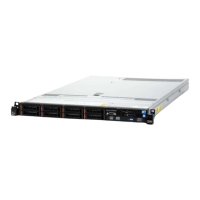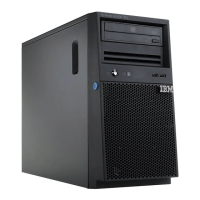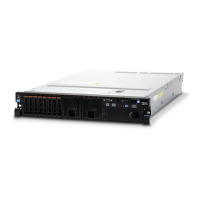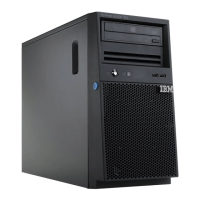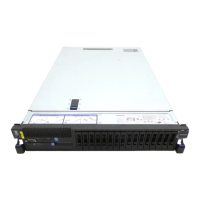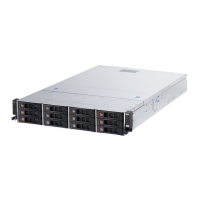If you have other devices to install or remove, do so now. Otherwise, go to
“Completing the installation” on page 65.
Installing a memory module
The following notes describe the types of dual inline memory modules (DIMMs)
that the server supports and other information that you must consider when you
install DIMMs (see “System-board optional device connectors” on page 29 for the
location of the DIMM connectors):
v Confirm that the server supports the DIMM that you are installing, see
http://www.ibm.com/systems/info/x86servers/serverproven/compat/us/.
v The server supports only industry-standard double-data-rate 3 (DDR3), 1066
MHz PC3-8500, 1333 MHz PC3-10600, or 1600 MHz PC3-12800, (single-rank,
dual-rank, or quad-rank in specified models), registered or unbuffered,
synchronous dynamic random-access memory (SDRAM) dual inline memory
modules (DIMMs) with error correcting code (ECC).
– The specifications of a DDR3 DIMM are on a label on the DIMM, in the
following format.
ggggg eRxff-PC3v-wwwwwm-aa-bb-ccd
where:
- ggggg is the total capacity of the DIMM (for example, 1GB, 2GB, or 4GB)
- eR is the number of ranks
1R = single-rank
2R = dual-rank
4R = quad-rank
-xff is the device organization or bit width (for example, x4, x8, or x16)
4 = x4 organization (4 DQ lines per SDRAM)
8 = x8 organization
16 = x16 organization
- wwwww is the DIMM bandwidth, in MBps
8500 = 8.53 GBps (DDR3-1066 SDRAMs, 8-byte primary data bus)
10600 = 10.66 GBps (DDR3-1333 SDRAMs, 8-byte primary data bus)
34 System x3530 M4 Type 7160: Installation and Service Guide
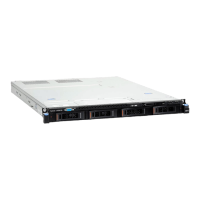
